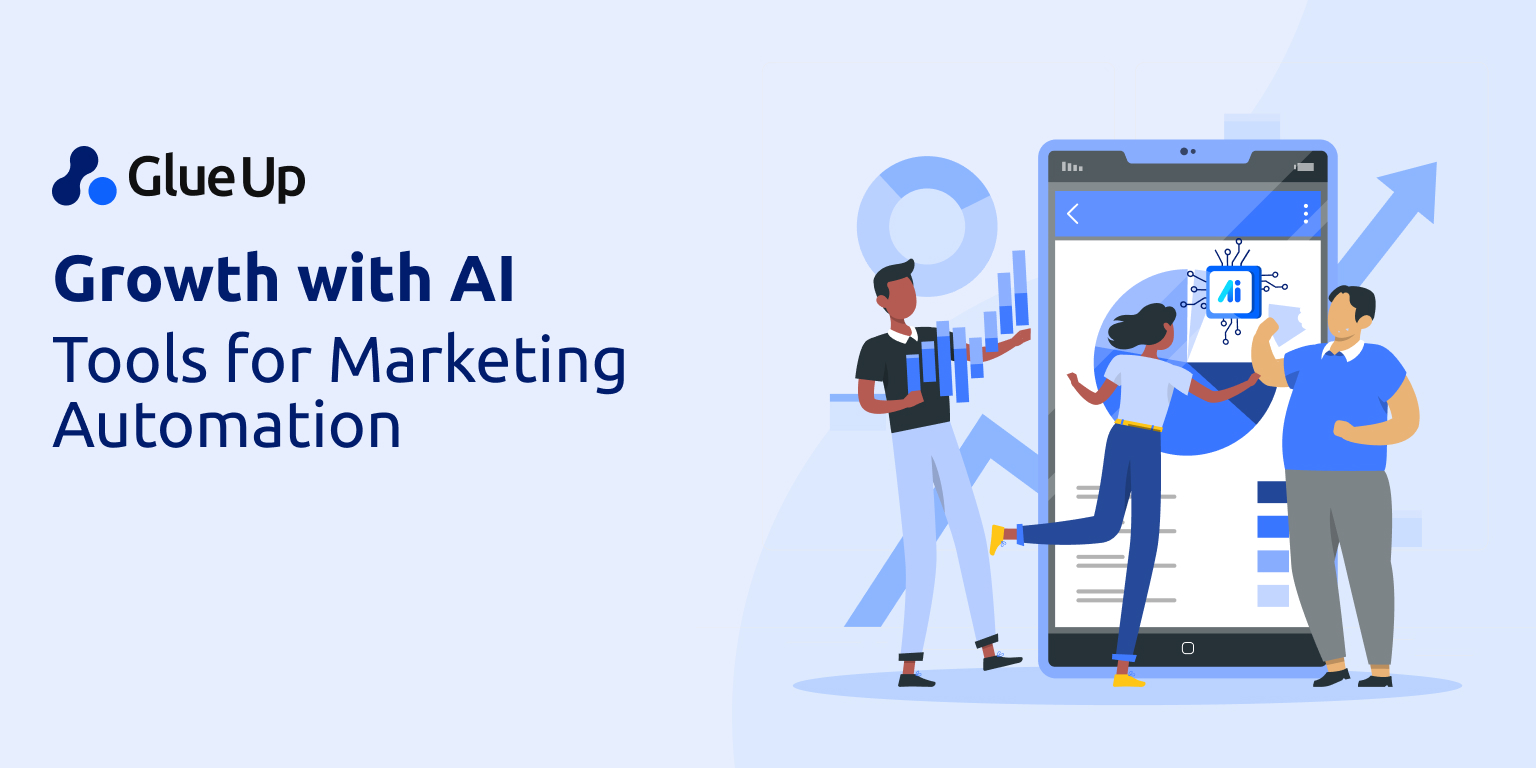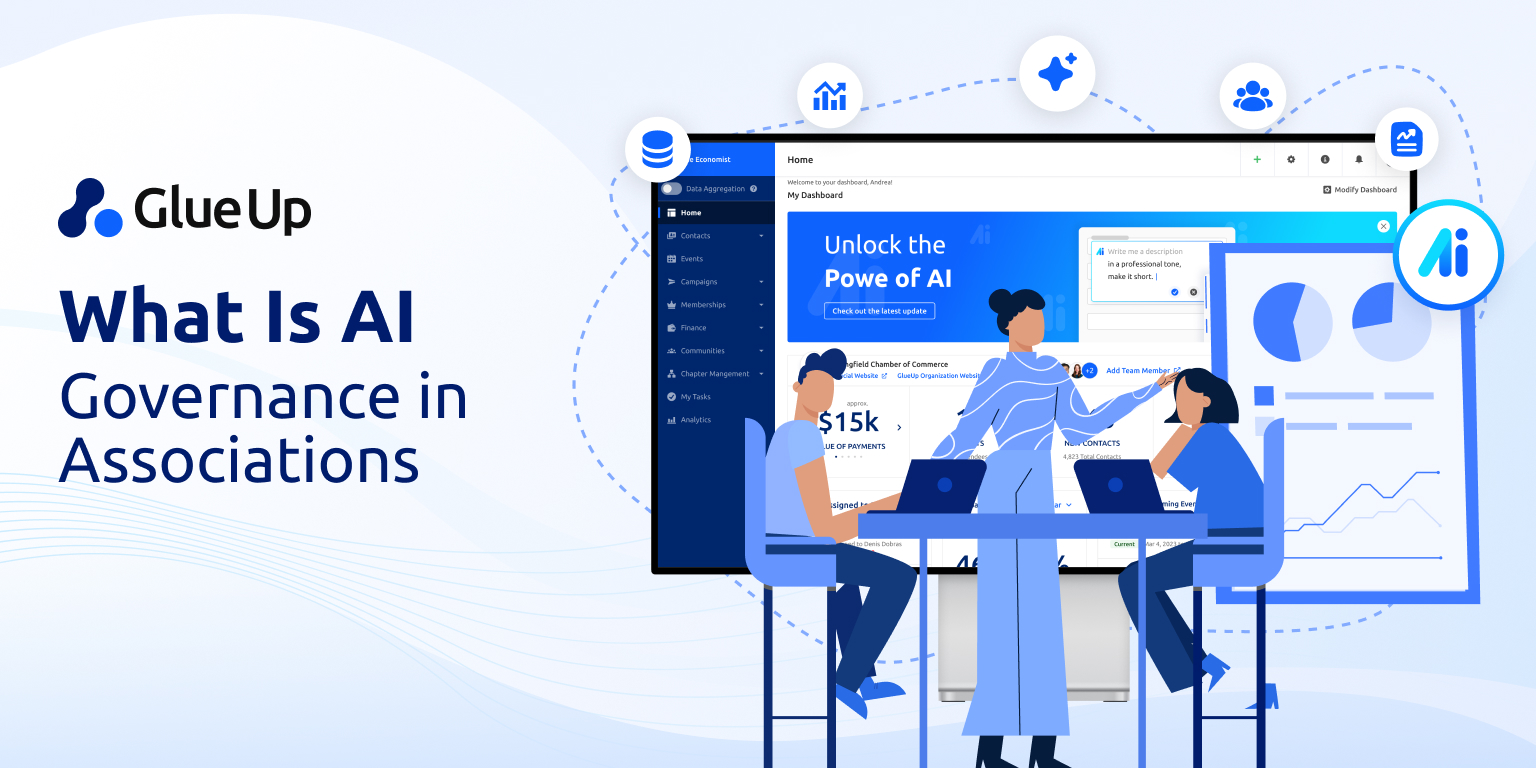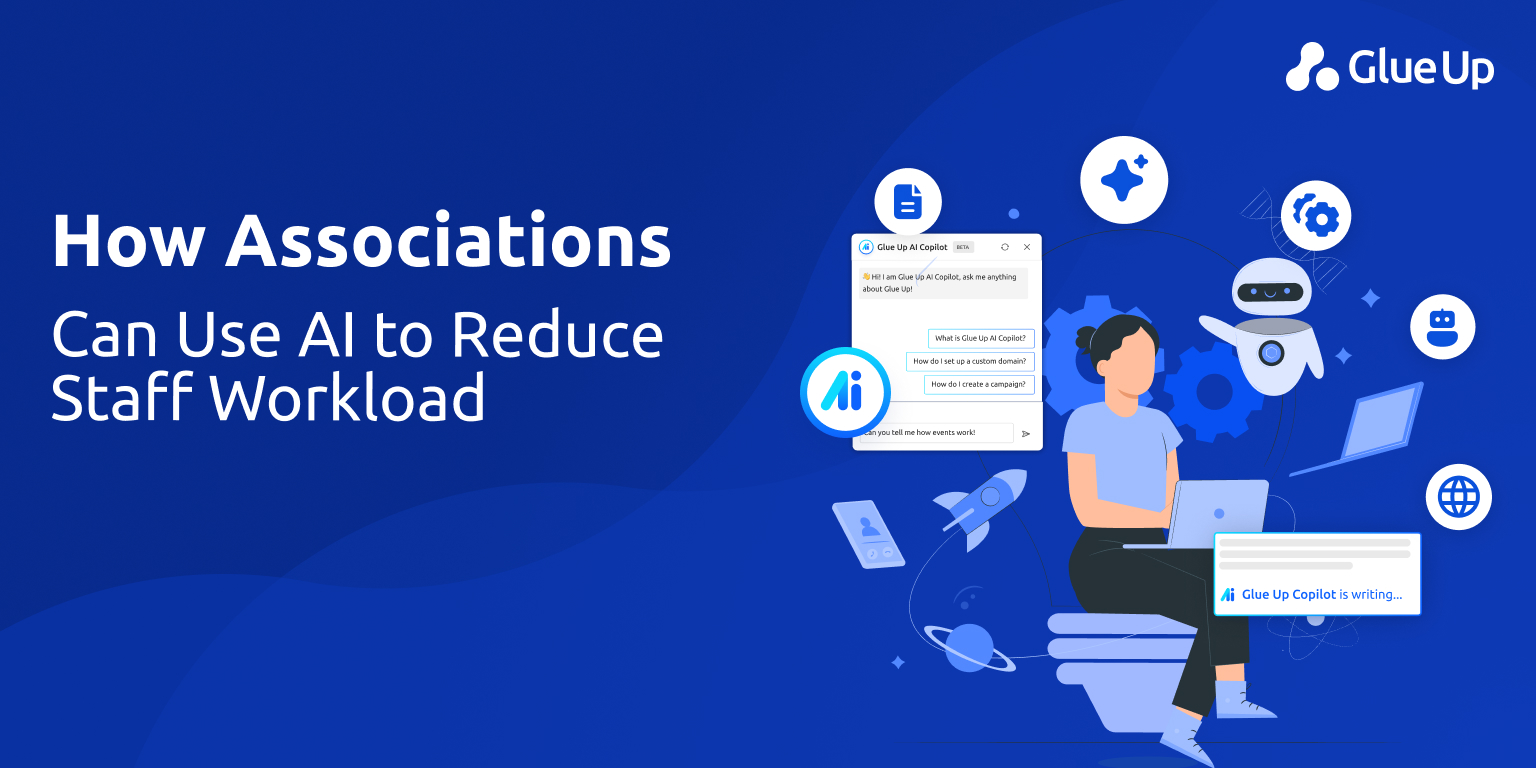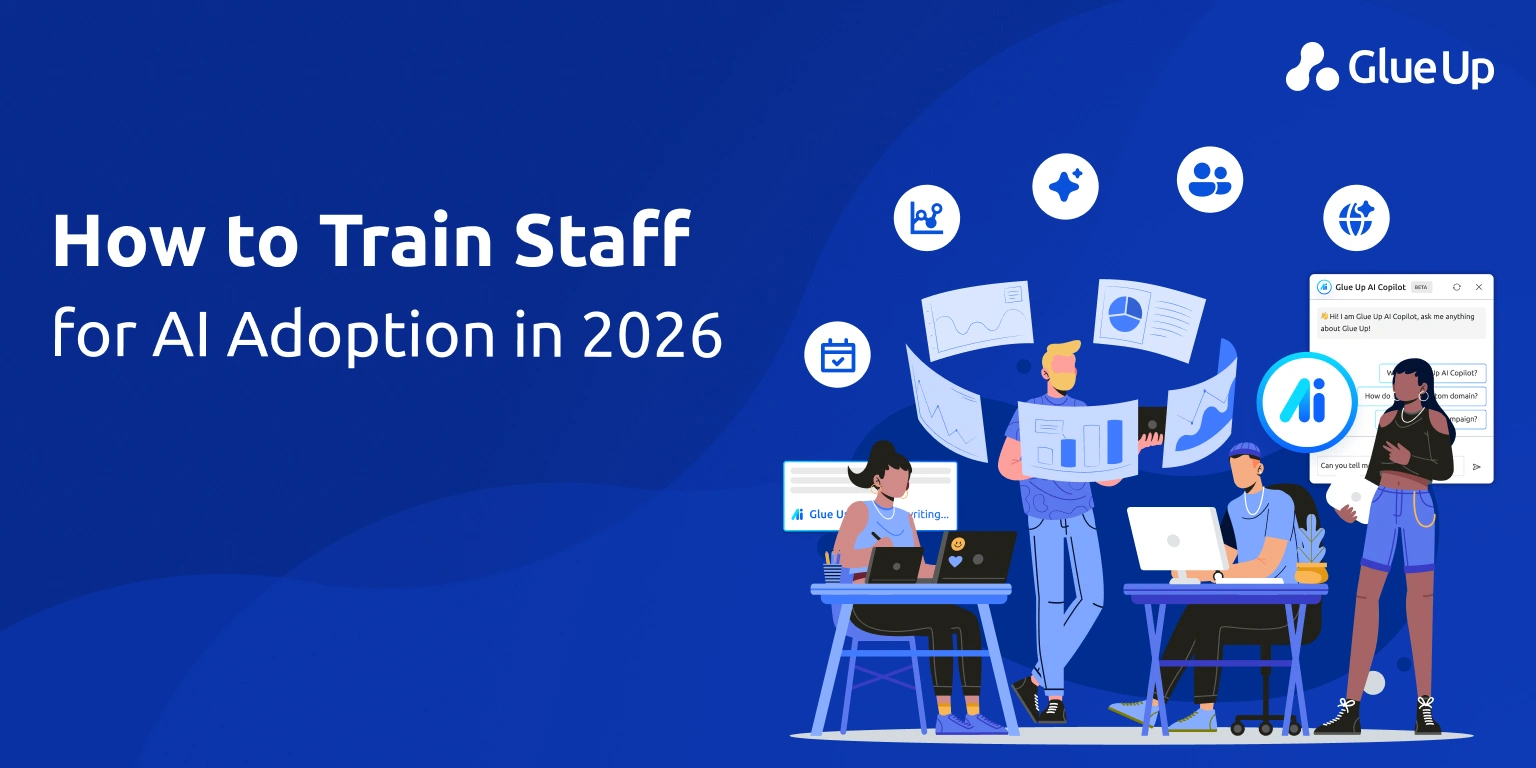
AI tools for marketing automation aren’t a luxury anymore; they’re the difference between guesswork and growth.
For associations, chambers, and membership-based organizations, marketing often gets stuck in disconnected systems: one platform for emails, another for the CRM, and a third for analytics. That’s when performance drops, and opportunities slip through the cracks.
When platforms can’t talk to each other, it’s hard to know what’s working, let alone double down on it. That’s where AI comes in.
From real-time engagement scoring to automated nurture flows and revenue attribution, the right AI tools can unify your marketing stack and help you act on data, not instinct.
Glue Up’s all-in-one platform combines CRM, marketing automation, event tools, and finance reporting, with AI built in to keep everything moving in sync.
Book a 15-minute executive demo and map your next automated campaign in real time.
Want to learn more? In this article, you’ll discover how to simplify your data, personalize your outreach, and track results instantly without adding work to your team.
TL;DR: Why AI Tools for Marketing Automation Matter
If you're short on time, here’s what the right AI tools can do for your marketing team:
- Score leads and segment intelligently: Use predictive models to identify who’s ready to act and who needs more nurturing.
- Deliver personalized journeys automatically: AI-generated content and behavior-based triggers keep campaigns relevant without manual effort.
- Track ROI across every touchpoint: Real-time dashboards show what’s working (and what’s not) across email, events, and finance, no more guessing.
Key Questions About AI Tools for Marketing Automation
These are the top questions decision-makers ask when considering AI for their marketing workflows. Optimized for both human readers and search engines, this FAQ block also supports rich results with schema markup.
What Are AI Tools for Marketing Automation?
They’re software platforms that use artificial intelligence to improve marketing campaigns' planning, execution, and measurement. This includes tools for predicting user behavior, automating content delivery, optimizing timing, and identifying high-intent leads—all based on real data patterns.
How Do AI Tools Increase Lead Conversion Rates?
By analyzing behavioral signals in real time, AI tools can score leads, personalize outreach, and automate the next best action. That means less guessing, more relevance, and faster movement through the funnel, all of which drive up conversions.
What Kind of Data Is Needed for AI Marketing to Work?
You’ll need clean, structured data, such as email engagement, website activity, event attendance, CRM profiles, and transaction history. The more connected your systems are, the more accurate and impactful the AI insights will be.
Unify Your Marketing Data Flow
The first step to smart automation isn’t sending better emails, it’s building a connected foundation.
Most associations and chambers have siloed systems: one tool for email, another for CRM, and yet another for payments or reporting. AI can’t help if your data is scattered.
That’s why top-performing teams start by mapping the marketing data flow across systems. In an integrated environment like Glue Up, the path looks like this:
CRM → AI engine → personalized outreach (email/SMS/push) → engagement → finance reporting
Real Benefits of This Setup:
- Predictive lead scoring: AI prioritizes the right contacts based on engagement history, saving time and guesswork.
Are you focusing on the members most likely to convert or renew? - Automated field updates and segmentation: Event check-ins, email clicks, and form submissions feed into real-time segments.
Is your database adapting as fast as your audience’s behavior? - Finance and marketing alignment: Transactions and campaign activity feed one unified ROI dashboard.
Can you actually prove what your campaigns deliver in dollars?
How to Build This Flow:
- Audit what platforms currently hold your marketing and member data
- Identify where syncing breaks down or lags
- Shift toward a unified platform or ensure your AI tools are API-connected across systems
Tip – Assign one team member to own your data infrastructure. Consistency beats complexity.
Personalize Without Manual Effort
Personalization is no longer optional; it’s expected. But doing it manually at scale? That’s where teams burn out.
AI marketing tools change the game by handling the heavy lifting of content personalization. Instead of writing dozens of segmented emails or building rule-heavy nurture flows, your AI engine analyzes behavior and adjusts messaging in real time.
Here’s What That Looks Like Inside a Unified System Like Glue Up:
- AI-powered email personalization: Tailor subject lines, calls to action, and content blocks based on past clicks, event attendance, or profile data.
Are your emails reacting to how your members engage, or just guessing?
- Dynamic content that adapts to each user: Campaigns shift automatically based on behavior: new vs. returning, active vs. at-risk.
Is your content flexible enough to meet each member where they are?
- Push and mobile messaging included: Reach members where they’re most likely to respond, with AI deciding the best time and channel.
Are your reminders landing when they’re actually ready to engage?
Personalization Checklist:
✅ Use behavior-driven segments, not just static tags
✅ Personalize CTA placement and timing
✅ Match content themes to lifecycle stage
✅ Automate re-engagement paths for inactive contacts
Tip – Focus less on demographic fields and more on intent signals. AI shines when it reacts to what people actually do, not what labels say.
Track and Improve ROI Continuously
Knowing what worked after the campaign ends isn’t good enough anymore. AI-powered marketing tools give you the ability to optimize in real time, not just reflect in hindsight.
That means your team can stop guessing and start redirecting budget, content, and outreach while campaigns are still live.
What Smart Teams Track With AI:
- Real-time campaign analytics: See opens, clicks, bounces, and conversions update live, broken down by segment or channel.
Can you spot what's working before the campaign ends?
- Predictive churn and intent modeling: Know who’s about to disengage (or convert) and act before it happens.
Are you reengaging quiet leads before they slip away?
- Revenue attribution dashboards: Tie every campaign to membership growth, event registration, or upsell, not just email clicks.
Are your reports showing activity or actual business impact?
How to Improve ROI With AI:
- Set campaign goals that map to revenue, not just vanity metrics
- Use predictive metrics to shift effort mid-stream
- Share real-time dashboards with leadership, not just end-of-month PDFs
Make Growth Easier With AI Tools That Actually Work
Let’s be real, most teams don’t need more tools. They need better ones.
If your marketing efforts feel like guesswork, or if you’re still stuck pulling reports from five different platforms to justify results, AI can help. But only if it’s built to work the way your team does: connected, intelligent, and quietly running in the background.
That’s what sets Glue Up apart. It brings together CRM, marketing automation, events, and finance, then layers AI directly into that ecosystem so real data powers every insight, trigger, and result.
What You Get With Glue Up’s AI Marketing Engine:
- Unified CRM + email + finance tracking in one system
- Predictive behavior modeling to identify intent and churn
- Channel-agnostic automation (email, push, SMS)
- Built-in compliance and data privacy tools
- ROI dashboards that speak your CFO’s language
This isn’t about working harder. It’s about finally seeing what’s working and letting AI do the rest.
Schedule a personalized demo today and see how predictive marketing can fuel real growth before next quarter hits.



